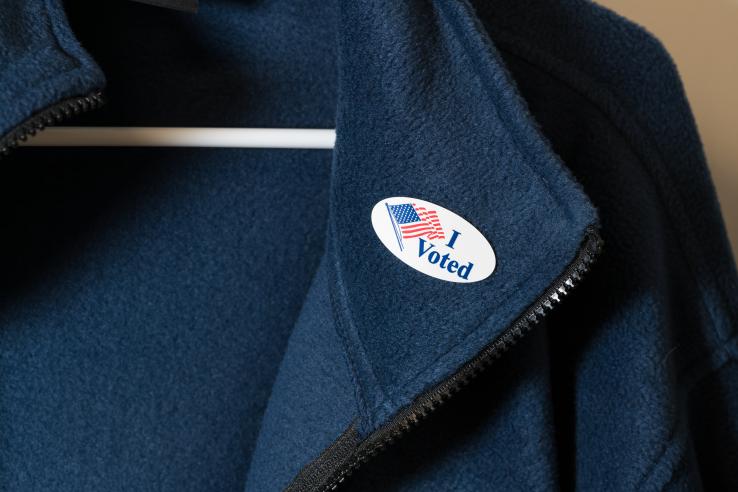October 2020 North America Newsletter

Good afternoon,
With less than two weeks remaining before the general election in the United States, I’m reflecting on the recent conversations I’ve had on voting. Discussing politics with friends and family often evokes memories of Thanksgiving dinner conversations gone wrong. However, research shows that connecting with those in your social network can be an impactful method of getting out the vote. Authentic conversation with those in our social circles provides a platform for us to express our care for participation in the democratic process.
In our October newsletter, we explore the research behind get-out-the-vote tactics. In a topical discussion about rigorous research on get-out-the-vote strategies with J-PAL affiliated researcher, Don Green, we learn how utilizing peer networks can increase voter turnout. We also highlight issues at the forefront of this election, both at the local and federal levels, including building a strong and resilient response to the COVID-19 pandemic and combating the opioid crisis.
Earlier this week, I took my ballot to a drop box. What’s your voting plan? Could you reach out to a few friends to ask them theirs?
Stay well,
Mary Ann Bates
Executive Director, J-PAL North America
Evidence-based campaign tactics during COVID-19 and the evolution of election science
Recent research points to personal outreach within peer networks as one of the most effective strategies in getting individuals to the polls. Such findings are critical in light of the upcoming election, particularly since four-in-ten voting-eligible Americans did not vote in the 2016 general election. In a recent conversation with J-PAL staff, Columbia University Professor of Political Science and J-PAL affiliated researcher, Don Green, shares insights into his research on get-out-the-vote tactics and what these findings mean for elections in the age of COVID-19. In 2020, pandemic induced shelter-in-place and social distancing measures mean these conversations must pivot from face-to-face to virtual interaction, whether via call or text, but still have the potential to be just as impactful. In the interview, Green also touches upon what previous research has revealed about the effectiveness of strategies such as mailings, canvassing, phone banking, or mass texts and the remaining research questions he is interested in exploring. To learn more about Don Green’s work (and learn more about the value of randomized evaluation), check out this case study learning tool developed by J-PAL North America and Don Green’s research team.
A learning agenda for building an effective COVID-19 response
In the wake of incalculable losses inflicted by the COVID-19 pandemic, J-PAL North America launched the COVID-19 Recovery and Resilience Initiative to identify the most effective methods to assist impacted individuals and communities. The Initiative will seek to advance the dual goals of helping decision-makers implement evidence-based solutions in the immediate term while generating rigorous evidence on longer-term policy measures. A new J-PAL blog series explores how the Initiative aims to address pre-existing inequities, further exacerbated by COVID-19, through a learning agenda on priority policy areas to guide future research. Key policy areas include jobs, labor, and the social safety net; education, youth, and opportunity; and health care delivery. See the J-PAL website to learn more about J-PAL North America’s work on COVID-19.
Combating the opioid epidemic through rigorous research
A new research project by Associate Professor of Public Policy and Urban Affairs and Economics at Northeastern University and J-PAL affiliated researcher, Alicia Sasser Modestino, is testing a promising approach to stem opioid addiction: better management of unused medications. In a new affiliate spotlight, Modestino shares her experience conducting a randomized evaluation of an opioid buyback program. This research is especially timely given increased rates of opioid use and overdoses in the United States during the COVID-19 pandemic. In an effort to address opioid addiction among secondary users—individuals who obtain their opioid medication from family and friends—through a money transaction or from improper disposal, Modestino and her team developed a pharmacy-based intervention to encourage individuals to bring back their prescriptions. In the piece, she highlights the unexpected hurdles that her research team faced while carrying out the pilot. Modestino also discusses the process of building a research partnership between her research team and a community health center and her advice for researchers or practitioners who are interested in pursuing a research partnership to help shape effective public policies.